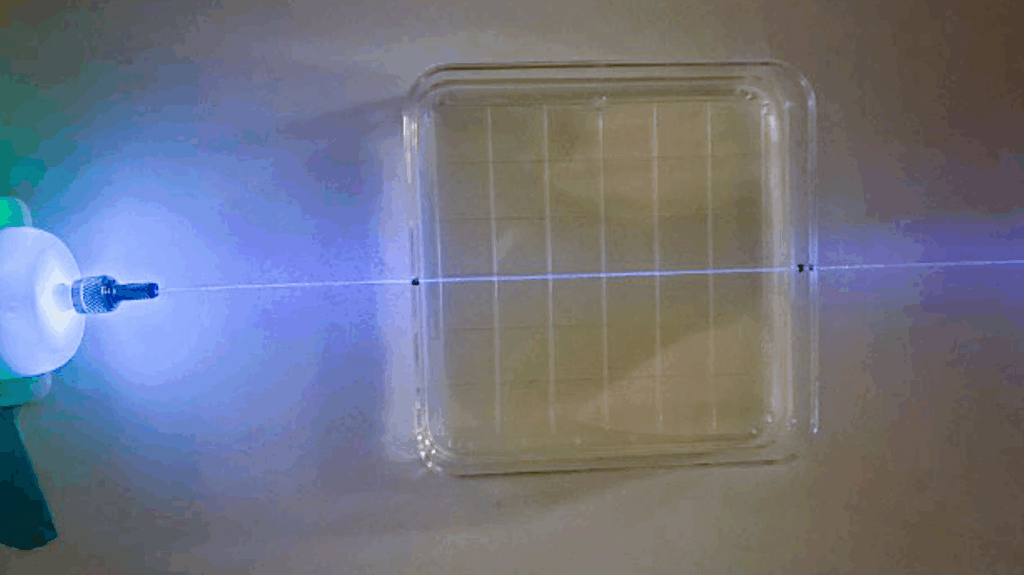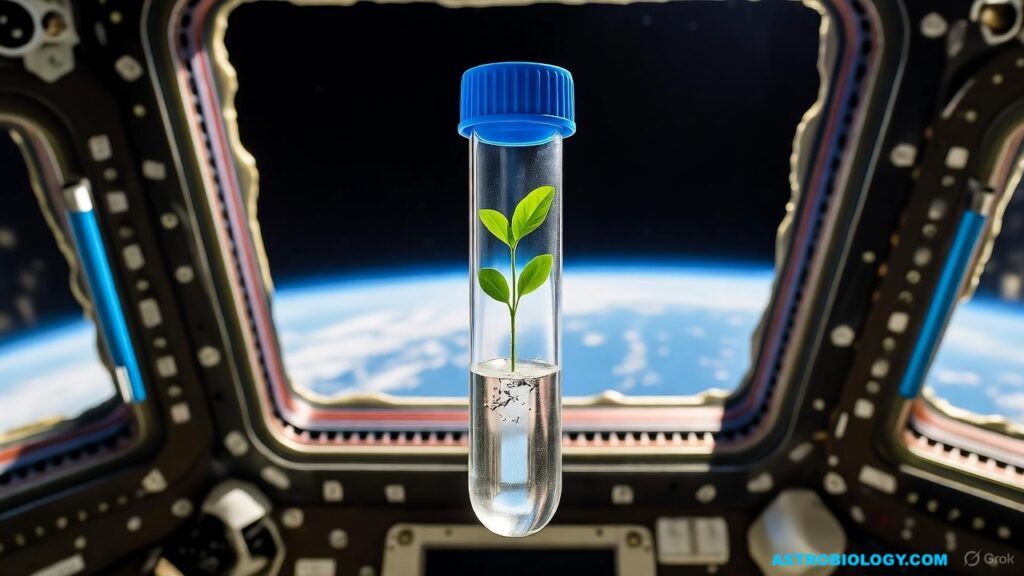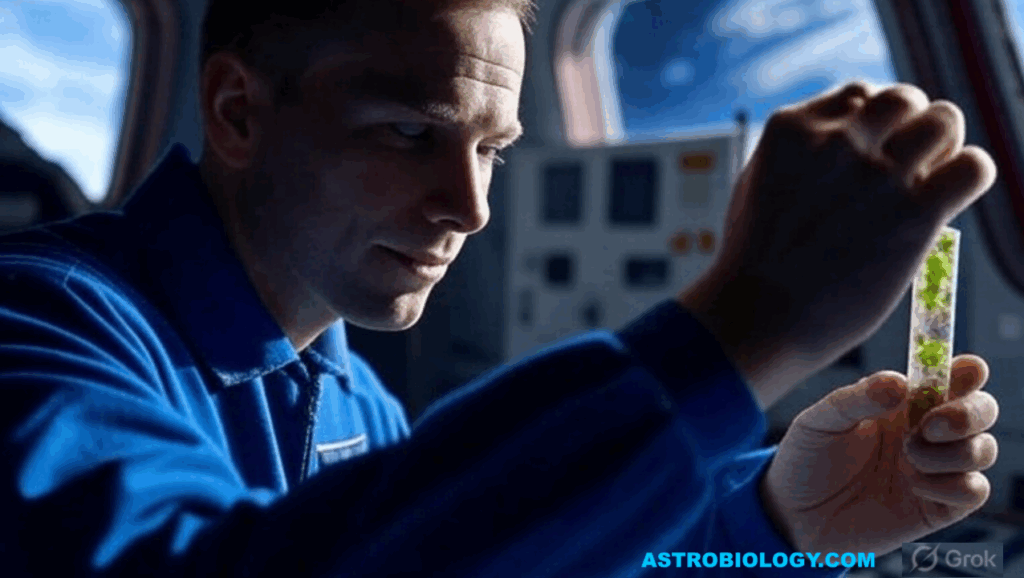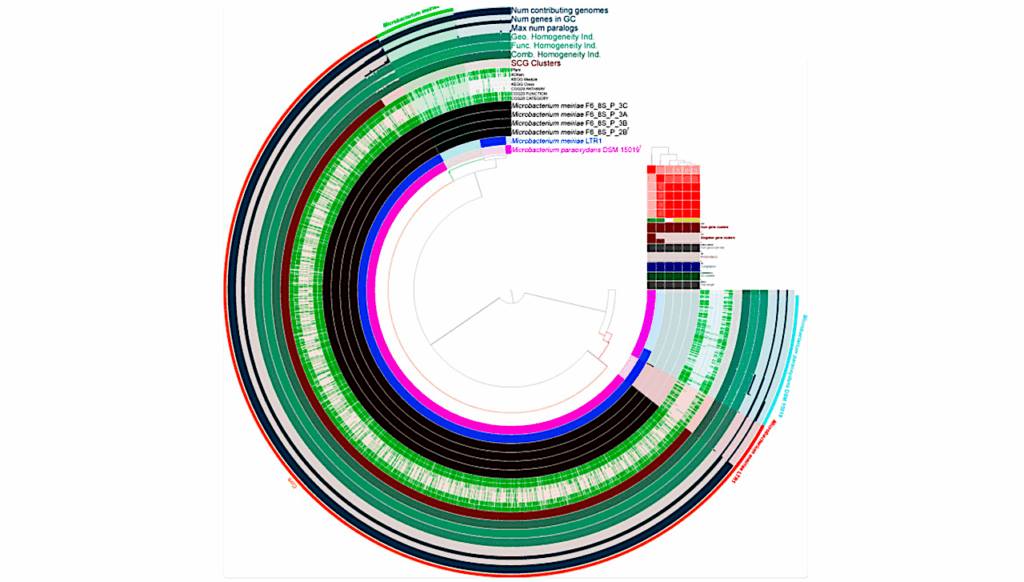NASA Spaceline Current Awareness List #1,174 14 November 2025 (Space Life Science Research Results)

NASA Spaceline Current Awareness List — Grok via astrobiology.com
The abstract in PubMed or at the publisher’s site is linked when available and will open in a new window.
Papers deriving from NASA support:
- Hardy JG, Theriot CA, Oswald T, Clément G.Spaceflight standard measures is a multidisciplinary study that systematically monitors risks to astronaut health and performance.npj Microgravity. 2025 Nov 12;11:78. Review.Note: This article may be obtained online without charge.
Journal Impact Factor: 5.1
Funding: “This work was funded by NASA’s Human Health and Performance Contract (HHPC) as part of the Standard Measures Cross-Cutting Project. The authors thank Suzanne Bell, Christian Castro, Brian Crucian, Sheena Dev, Steven Laurie, Stuart Lee, Brandon Macias, Eric Rivas, Scott Smith, Sarah Wallaceś, Scott Wood, Sara Zwart, and the personnel of the Human Health and Performance Laboratories at NASA’s Johnson Space Center for their help with data collection and data analysis. The authors also thank Kerry George for editing the manuscript.” - Kuldavletova O, Navarro Morales DC, Macaulay TR, Wood SJ, Toupet M, Hautefort C, Van Nechel C, Rengel A, Kola A, Fréret T, Quarck G, Denise P, Clément G.Bilateral vestibulopathy affects spatial and temporal perception.PLoS One. 2025 Nov 6;20(11):e0336108.Note: This article may be obtained online without charge.
Journal Impact Factor: Not available for this journal
Funding: T.R. Macaulay, S.J. Wood, and G. Clément are affiliated with NASA Johnson Space Center. - Roychoudhry S, Sageman-Furnas K, Taylor HJ, Showpnil I, Wolverton C, Friml J, Del Bianco M, Kepinski S.Angle dependence as a unifying feature of root graviresponse modules.Proc Natl Acad Sci USA. 2025 Nov 18;122(46):e2506400122.PI: C. WolvertonNote: This article may be obtained online without charge.
Journal Impact Factor: 9.1
Funding: “This study was funded by the BBSRC (grant no. BB/N010124/1) and Leverhulme Foundation (grant no. RPG-2018-137) to M.D.B. and S.K., a Fully Funded International Research Scholarship awarded to K.S.-F., and by NASA (grant no. 80NSSC21K0585) to C.W.” - Thosar SS, Bowles NP, Butler MP, McHill AW, Rice SPM, Emens JS, Shea SA.Endogenous circadian system attenuates nighttime vascular endothelial function in people with untreated obstructive sleep apnea.J Am Heart Assoc. 2025 Nov 6;e043596. Online ahead of print.PI: S.S. ThosarNote: This article may be obtained online without charge.
Journal Impact Factor: 6.106
Funding: “This work was supported by National Institutes of Health Grants R01‐HL‐125893, F32‐HL‐131308; R35‐HL‐155681, and R01‐HL‐163232; National Space Biomedical Research Institute through Cooperative Agreement NCC 9‐58; the Ford Foundation Fellowship Program and 1K01HL151745 to N.P.B.; Oregon Institute of Occupational Health Sciences at Oregon Health and Science University via funds from the Division of Consumer and Business Services of the State of Oregon (Grant ORS 656.630); and National Institutes of Health Clinical Translational Science Award UL1‐TR‐000128.”
Other papers of interest:
- Castaño P, Leonelli S.Understanding the “spaceflight treatment” in plant space biology: Experimental practices, metadata workflows, and data re-analysis.Stud Hist Philos Sci. 2025 Dec;114:102073.
- Caso S.Training adaptable astronauts: Integrating ecological psychology into human performance in space missions.Ecological Psychology. 2025 Nov 4;1-16. Online ahead of print.
- Begani L, Remore LG, Ragosta S, Rizzaro MD, Guarnaccia L, Alotta GA, Riboni L, Miozzo MR, Barilla E, Gaudino C, Locatelli M, Garzia E, Marfia G, Navone SE.Modeling glioblastoma with brain organoids: New frontiers in oncology and space research.Int J Mol Sci. 2025 Nov 1;26(21):10664. Review.Note: This article is part of Special Issue “Advances in the Translational Preclinical Research” (https://www.mdpi.com/journal/ijms/special_issues/Z0PK4B8P3E) and may be obtained online without charge.
- Liu K, Li S, Lv Y, Yang R, Li X.Structure-aware multi-animal pose estimation for space model organism behavior analysis.Animals (Basel). 2025 Oct 29;15(21):3139.Note: This article is part of Special Issue “Artificial Intelligence as a Useful Tool in Behavioural Studies” (https://www.mdpi.com/journal/animals/special_issues/84451N52EB) and may be obtained online without charge.
- Siddiqui R, Qaisar R, Elmoselhi A, Khan NA.Digital twin modeling in microgravity: A framework for predictive and personalized space medicine.Life Sci Space Res. 2025 Nov 7. Online ahead of print.Note: This is an opinion/position article.
- Shakir MZ, Wang N, Usmani MW, Ullah I, Liu J, Zhou X, Zhao Y, Du Q, Chen H, Ning J, Liu X.Neurobiological and neurophysiological impacts of real spaceflight and simulated microgravity on C. elegans: A comprehensive review.Life Sci Space Res. 2025 Nov 13. Review. Online ahead of print.
- Stepanek J.The contribution of aerospace medicine specialty expertise in the diagnosis and treatment of headache disorders with concomitant clinically symptomatic dyscapnia (respiratory alkalosis/acidosis).Curr Neurol Neurosci Rep. 2025 Oct 22;25:72.
- Tordeur C, Abdessater E, Hossein A, Righetti F, Sinitsyn V, Mershina E, Luchitskaya E, Caiani EG, Faoro V, Tank J, van de Borne P, Migeotte PF, Rabineau J.Long-duration human spaceflight induces atrophy in the left ventricular papillary muscles.npj Microgravity. 2025 Nov 12;11:79.Note: This article may be obtained online without charge.
- Zarrinbakhsh A, Gupta N, Sinha J, Zhou X, Chen S, Khan HM, Navajas EV, Beg MF, Liang Y, Yucel Y.Intraocular pressure and retinal nerve fiber layer changes in a microgravity mouse model and relevance to spaceflight-associated neuro-ocular syndrome.Eye Brain. 2025 Nov 6:17:137-149.Note: From the abstract: “The study involved 20 adult male B6(Cg)-Tyr c -2J /J mice, randomly assigned to two groups: the hindlimb unloading (HU) mice, unloaded for 21 days followed by 14 days of release, and control mice kept under the same conditions except HU for 35 days. IOP and RNFL thickness in peripapillary and peripheral rings of right and left eyes were measured before and once a week after HU.” This article may be obtained online without charge.
- Zhang W, Xi Y, Zhang H, Li X, Wang W, Zhao Z, Gao M, Li S, Han P, Liu Y.Simulated microgravity induces time-dependent enhancement of Pseudomonas aeruginosa biofilm formation.Curr Res Microb Sci. 2025;9:100493.
- Ghani F, Huang P, Zhang C, Zubair AC.EGFR mRNA-engineered mesenchymal stem cells (MSCs) demonstrate radioresistance to moderate dose of simulated cosmic radiation.Cells. 2025 Nov 1;14(21):1719.
- Kim Y-K, Lim IJ, Lim H, Joo Y, Park J, Hossain MM, Cho H, You N-H, Ahn S, Lee H, Lee SS, Joo Y, Moon SY, Yoo HI, Lum C, Park C, Choi SQ, Jang SG.High-density boron nitride nanotube composites via surfactant-stabilized lyotropic liquid crystals for enhanced space radiation shielding.Adv Funct Mater. 2025 Sep 7. Online ahead of print.Note: From the abstract: “Despite significant technological advancements in space exploration, human space travel and colonization remain limited by the health risks associated with space radiation. Boron nitride nanotubes (BNNTs) have been proposed as an advanced material for space applications due to their high specific strength and efficient radiation shielding capabilities. However, the practical implementation of BNNTs has been slow, primarily due to technological challenges in fabricating structural materials incorporating BNNTs. In this study, a method is presented for fabricating high-density BNNT films that are mechanically robust, exhibit high thermal conductivity, and effectively attenuate space radiation.” This article may be obtained online without charge.
- Cox J, Musa D, Cole JH.A new quantitative index of trabecular bone microstructural organization and its association with tissue failure in human vertebrae.J Biomech Eng. 2025 Nov 8;1-36. Online ahead of print.
astrobiology, Microgravity, space biology, space medicine, space station, spaceline,








